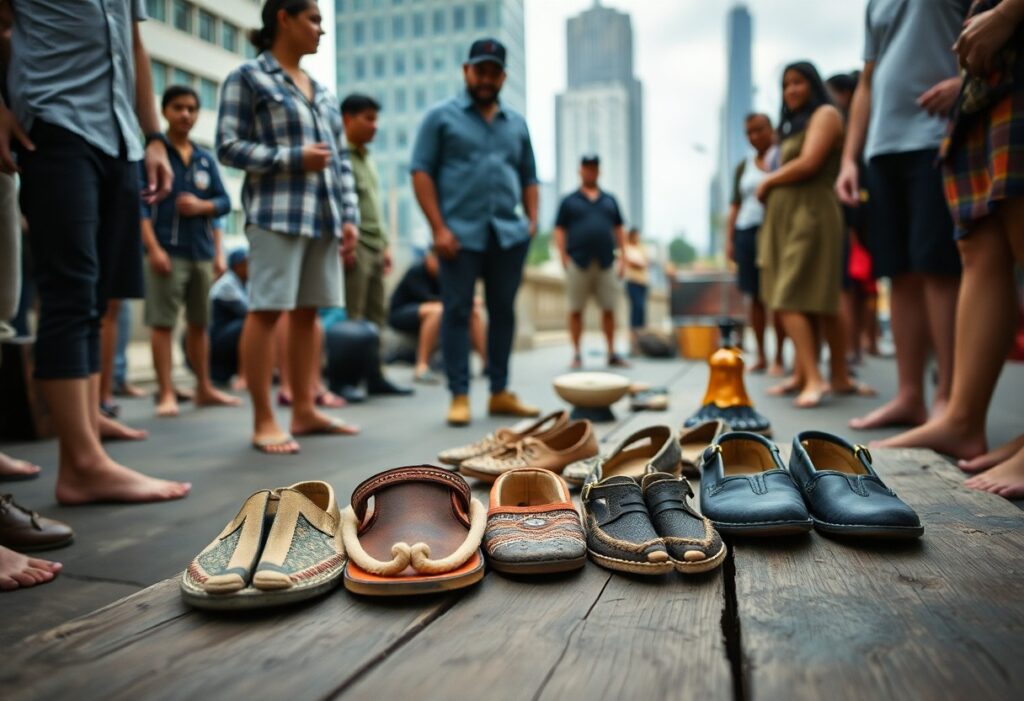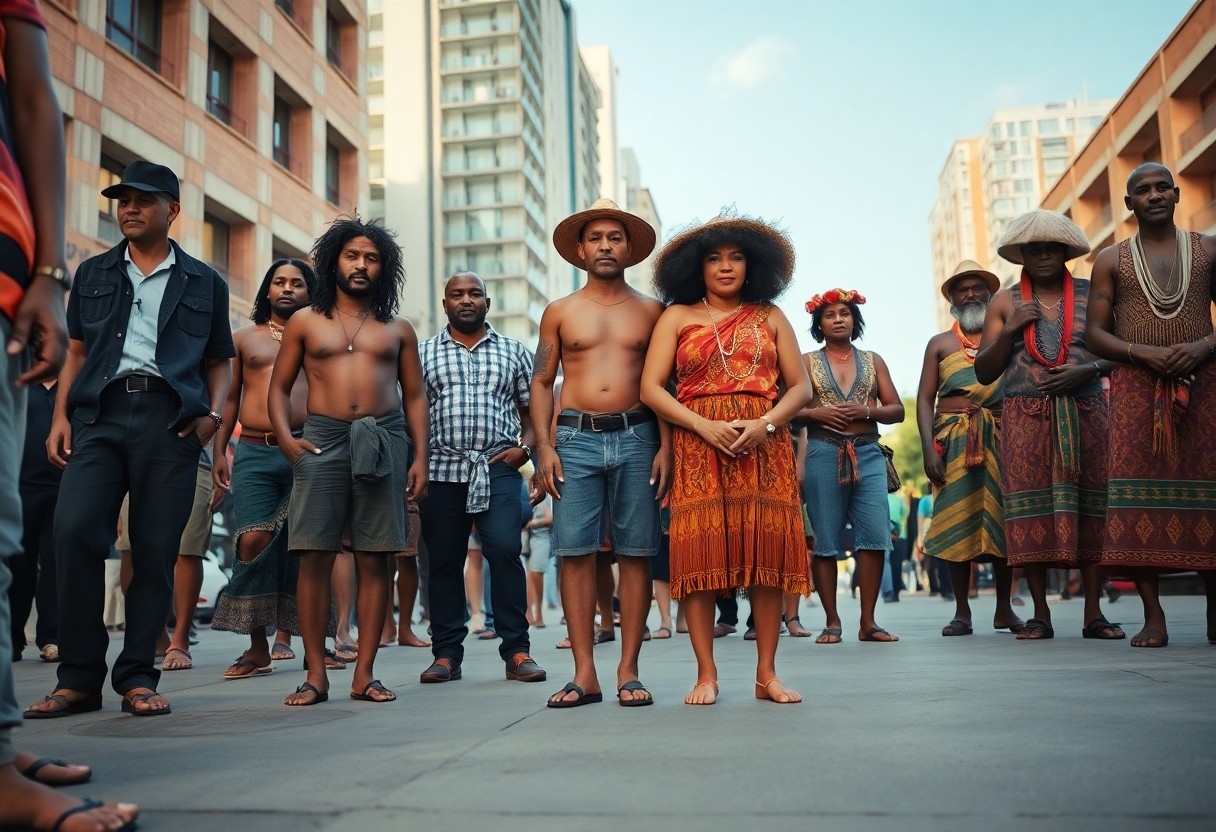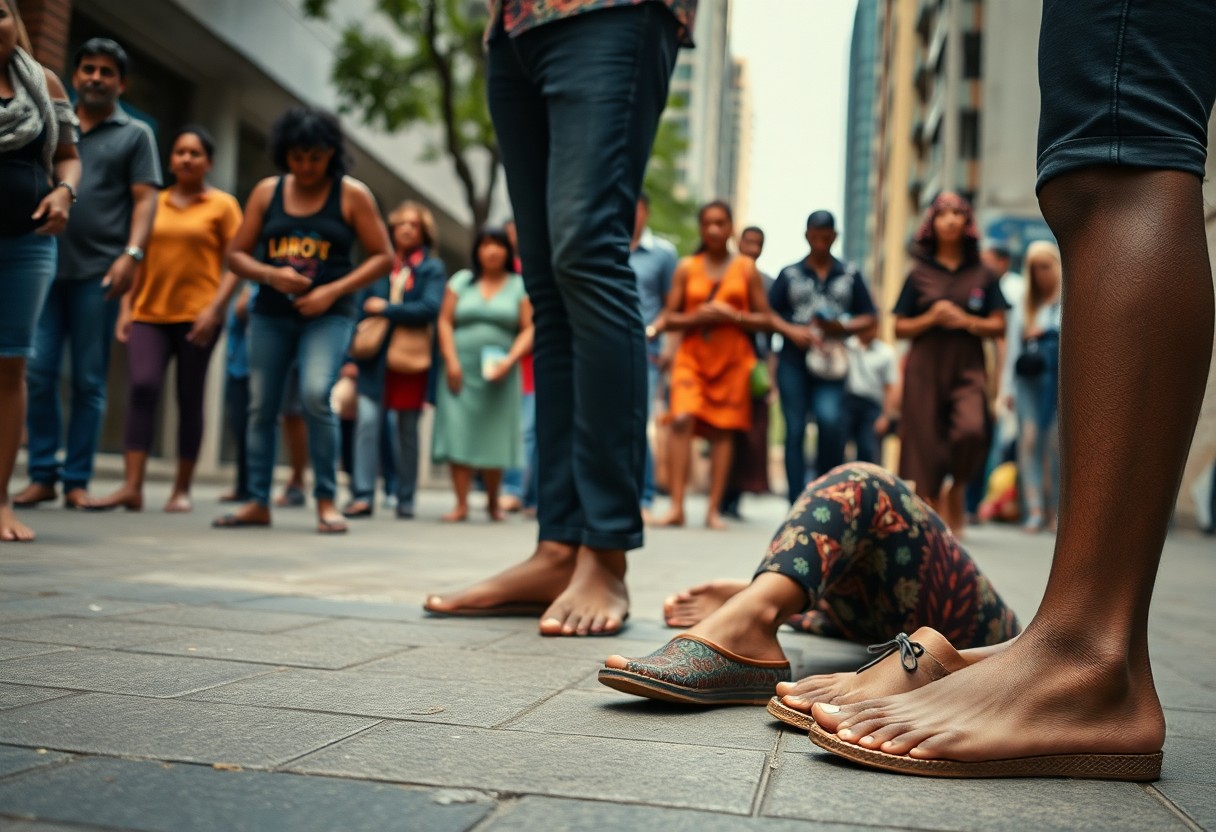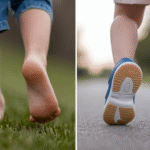
Exploring the world of barefoot footwear through the lens of cultural anthropology unveils intriguing narratives that connect the profound traditions of Aboriginal cultures with modern urban lifestyles. As you delve deeper into this enthralling transformation, you'll uncover how the cultural beliefs and practices surrounding minimalist footwear shape our perceptions of comfort, our relationship with nature, and our methods of personal expression. Understanding these themes not only broadens your perspective but also prompts a reconsideration of how your choices in footwear can embody significant cultural meanings and reflect your personal identity.

Connecting Ancient Footwear Traditions with Modern Innovation for a Better Tomorrow
The modern footwear sector presents a vibrant tapestry that intricately weaves together age-old traditions and cutting-edge innovations, fostering an increasing appreciation for <a href="https://limitsofstrategy.com/barefoot-footwear-merging-biomechanics-with-user-search-trends/">barefoot footwear</a>. This journey not only respects traditional indigenous techniques but also adapts these practices to seamlessly integrate into your contemporary lifestyle. By acknowledging the importance of historical customs, you can discover an exciting fusion of cultural appreciation and practical aesthetics in your everyday footwear choices, thereby enhancing your personal style while simultaneously honouring the past.
Comparing Indigenous Foot Conditioning Techniques with Contemporary Approaches
Within various indigenous cultures across the globe, distinct conditioning methods have been employed to strengthen feet for navigating diverse terrains. Techniques such as walking barefoot across various surfaces have been shown to enhance the arches and muscles in ways that many modern interpretations unfortunately do not replicate effectively. While contemporary minimalist footwear may strive to mimic these effects, they often fall short of providing the authentic experience of true contact with the earth, which is essential for fostering natural foot strength and flexibility. Engaging with these traditional methods offers a comprehensive understanding of foot health that modern designs frequently overlook, thereby highlighting the necessity of such practices in maintaining overall well-being.
Charting the Historical Progression of Military Footwear: From Ancient Caligae to Current Tactical Boots
The saga of military footwear is a fascinating tale of adaptation and innovation, evolving from the sturdy Roman caligae, designed for durability and traction, to the modern tactical boots that merge protection with agility and comfort. A closer inspection of these transitions reveals a consistent theme: in challenging environments, functionality takes precedence, necessitating gear that enhances soldiers’ endurance and mobility.
The Roman caligae symbolised an advanced response to military requirements, crafted from robust leather with an open-toe design for ventilation. This ancient footwear featured thick soles that effectively absorbed shocks and provided critical traction, essential in combat scenarios. Fast forward to contemporary times, and tactical boots are now made from advanced materials like Kevlar and waterproof membranes, significantly improving durability and performance. These modern designs incorporate padded collars and sophisticated cushioning systems to minimise injuries during demanding military operations. Recognising the legacy of military footwear illuminates how these historical styles have paved the way for today’s innovations, merging heritage, practicality, and advanced technology to meet the evolving demands of today’s warriors.

Understanding the Urban-Rural Footwear Divide: Cultural Perspectives and Insights
The differing footwear selections in urban versus rural contexts reveal significant cultural and practical distinctions. Urban environments tend to prioritise style and brand identity, while rural settings focus more on practicality and durability. As barefoot footwear gains popularity, urban residents increasingly adopt its minimalist designs as a fashion statement and a means to achieve perceived health benefits. On the other hand, individuals in rural areas may remain hesitant, influenced by traditional values and the practical demands of their environments.
Identifying Key Trends in Urban Acceptance of Barefoot Footwear
In urban areas, a noticeable trend towards embracing barefoot footwear is emerging, with adoption rates steadily rising over the last decade. This movement is driven by several factors, including increased health awareness, a growing interest in natural movement, and the impact of fitness trends such as yoga and running. Recent surveys indicate that approximately 35% of urban residents have actively sought out barefoot-style shoes, demonstrating a cultural shift towards embracing innovative body mechanics and enhancing overall well-being.
Exploring Gender-Based Barriers to Adoption: Who is Leading the Barefoot Footwear Movement?
Gender dynamics are significant in influencing the acceptance of barefoot footwear, with different motivations driving the choices of men and women. Women often encounter greater societal pressures regarding fashion and aesthetics, which can hinder their willingness to adopt minimalist styles. Conversely, men may be more driven by the performance and health benefits associated with these shoes, leading to higher adoption rates among male consumers.
A deeper exploration of the gendered aspects of barefoot footwear adoption reveals that societal expectations heavily shape women’s decisions. Women frequently navigate a landscape where ideals of beauty and fashion overshadow practical health advantages. Research indicates that approximately 45% of men in urban settings are inclined towards barefoot shoes, compared to only 30% of women. Female consumers often grapple with balancing aesthetics and functionality, leading to a more cautious evaluation of barefoot footwear designs against their desire for comfort and support. By empowering women through targeted awareness campaigns and showcasing stylish barefoot options, the willingness to engage with this trend could increase, potentially reshaping urban footwear narratives and promoting inclusivity across genders.

Revolutionary Technologies Shaping the Future of Barefoot Footwear
As the demand for barefoot footwear continues to soar, innovative technologies are poised to transform your approach to comfort and performance. Advances in materials science and personalised fitting techniques will not only enhance functionality but also tailor your walking experience, blending traditional wisdom with modern design principles. We are entering a new era where your footwear becomes as unique as the journey it accompanies, resulting in improved comfort and enhanced performance.
Utilising 3D Scanning Technology for the Ideal Fit
The advent of 3D scanning technology is revolutionising how barefoot footwear is customised, allowing for a precise fit that conforms to your unique foot shape. Rather than settling for standard sizes, your shoes can be meticulously designed to align with the contours of your feet, significantly improving comfort while reducing the risk of injury. The availability of custom-fit options will not only enhance your walking experience but also make barefoot shoes accessible for individuals with diverse foot shapes and sizes.
Incorporating Smart Sensors: The Next Evolution in Footwear Technology
The integration of smart sensors into barefoot footwear is set to redefine the industry by embedding technology directly into the soles. These innovative features can monitor a range of metrics, from distance travelled to foot pressure, providing you with invaluable insights to optimise your walking or running habits. Equipped with real-time data, you can adapt your activities to enhance performance and safeguard your health.
Imagine having access to real-time analytics while you walk or run. Smart sensors can track your gait, alerting you to any irregularities that could lead to injury. Some pioneering brands are already developing footwear capable of analysing your foot's impact on various terrains, offering personalised recommendations for style or cushioning adjustments on the fly. This groundbreaking integration fuses smart technology with the traditional barefoot philosophy, ensuring you maintain a natural stride while leveraging the latest advancements in wearable tech. The potential to enhance sports performance, aid rehabilitation, and improve everyday comfort is limitless, fundamentally transforming how you interact with your surroundings with every step.
Reflecting on the Journey of Barefoot Footwear
Your exploration of the cultural anthropology surrounding barefoot footwear reveals a rich narrative woven from the threads of Aboriginal traditions to contemporary urban practices. By embracing the principles of natural movement and fostering a connection to the earth, you gain valuable insights into how this footwear philosophy transcends mere fashion, profoundly influencing lifestyle choices and community values. As you contemplate these diverse perspectives, consider how your footwear decisions can embody and promote a deeper understanding of cultural heritage and adaptability in today’s world.
The Article Cultural Anthropology of Barefoot Footwear: From Aboriginal Traditions to Modern Urban Adoption appeared first on My Shoes Finder
The Article Cultural Anthropology of Barefoot Footwear: Traditions to Today Was Found On https://limitsofstrategy.com
The Article Cultural Anthropology of Barefoot Footwear Through the Ages found first on https://electroquench.com







Your exploration of barefoot footwear and its cultural significance resonates deeply with me, especially as someone who has experienced the liberating shift from conventional footwear to minimalist options. It’s fascinating to consider how much our shoe choices can reveal about our identities and values.